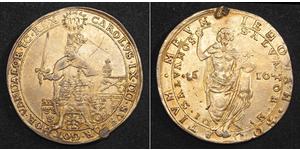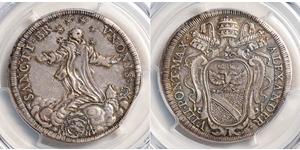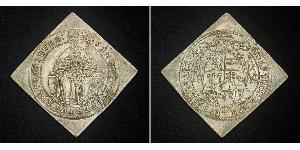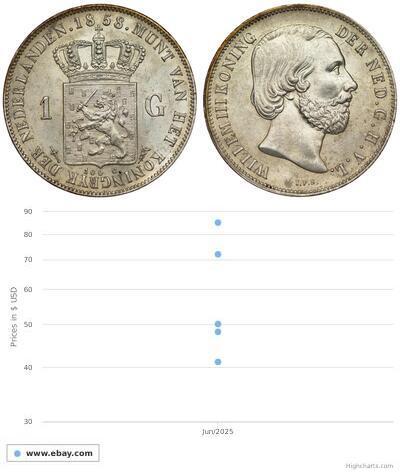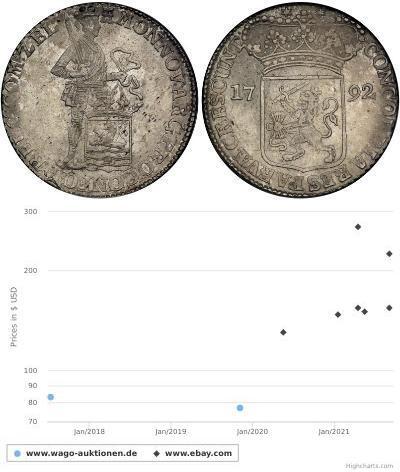(Vendida por $417.0)
1733, Netherlands, Overijssel. Large Silver Rider (Ducaton) Coin. XF-AU!
Mint Date: 1733
Reference: Davenport 1829, KM-83.1. R!
Denomination: Ducaton of 60 Stuivers (Silver Rider)
Condition: Minor weight adjusting marks in reverse, otherwise a nicely struck XF-AU!
Material: Silver (.941)
Weight: 32.62gm
Diameter: 42mm
Obverse: Armored knight on horse, brandishing sword on jumping horse right. Crowned shield with arms of Overijssel below.
Legend: MO : NO : ARG : PRO CONFOE (crowned shield) BELG : PR : TRANSI . (privy mark)
Reverse: Crowned shield with, supported by crowned roaring lions. Date (1733) in foliage below.
Legend: CONCORDIA RES PARVAE CRESCUNT .
In 1659 the Dutch states started production of the 'silver rider' ducaton, featuring a mounted knight on horseback. This design weighing 32.779 grams of 0.941 silver also featured the crowned arms of the United Netherlands on the reverse, with a shield below the knight indicating the province of minting. Rider ducatons were minted until 1798. In the period 1726-1751 ducatons were minted bearing the monogram of the Dutch East India Company. As a trade coin the familiar design of the Dutch rider helped it to compete against well-known world coins such as the Spanish dollar. It was valued at 60 stuivers.
Overijssel is a province of the Netherlands in the central eastern part of the country. During its early history, Overijssel was formerly known as Oversticht and also included much of modern-day Drenthe. In 1336, it was made part of Guelders, though it was ceded to the Bishopric of Utrecht in 1347 and was known as het Sticht. The Bishops ceded the Oversticht to the Emperor Charles V in 1528, who styled himself "Lord of Overijssel", thereby giving the province its modern name. The people joined with the other Dutch and rebelled against Charles' heir Philip II. Overijssel became governed by the most powerful mayors and lords in the province. After a brief occupation by the forces of the Bishop of Münster (1672–74), Overijssel received a new form of government which granted the stadtholders more power. Widespread resistance against the increased power throughout the provinces eventually led to the formation of the Batavian Republic in 1795. A centralist government arose and the Netherlands was organised into a series of départements, based on those used by revolutionary France. At first organised into its own département, it was merged with Drenthe in 1798 to form Ouden IJssel, which was renamed Overijssel in 1801.
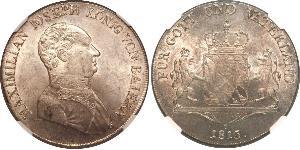
1 Thaler Reino de Baviera (1806 - 1918) ...
grupo tiene 13 monedas / 12 precios
Add coin to this group

8 Real Virreinato de Nueva España (1519 ...
grupo tiene 103 monedas / 97 precios
Add coin to this group







